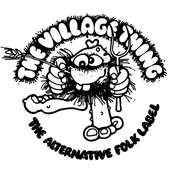Bristol's Musical Mind
According to Mark Jones (1, pp7), folk music began to resurface in Britain, by the early 1950s, with artists such as Ewan MacColl leading the music scene.
From this revival of folk music, folk clubs started to arise, which a few became hotbeds of socialism, with the first Bristol folk club based at the Communist club at Lawford gate (Jones, 2009, pp8)
Apart from that folk music in Bristol had more of a cultural base setting. When evangelists were rediscovering folk music, due to the tradition of passing down the songs orally being halted from WW1 and WW2, the folk songs were altered to sound more 'appropriate and 'nicer'.
By the early 1950s, people figure out popular folk music was not authentic. They believe that” the middle class had hijacked folk music and made it into something they wished it to be.” (Jones, 2009, pp8).
By the late 1960s and 1970s, most of the folk clubs were situated in bars or licenced student unions, with one of the best-remembered first clubs was the Bristol University Folk and Blues club, the Troubadour folk club and the Bristol Ballads and Blues
Troubador had more of a bias toward contemporary folk from the international artist, meanwhile, Bristol Ballads and Blues focus more on traditional folk from a local artist.
Nowadays, we do not have a great club like the Troubador, however, the Bristol folk festival exists, which was seen as an inclusive festival suitable for all ages, we as in the past mainly teenagers and young adults.
FOLK MUSIC
The revival of folk music
Hover over the box to see the pictures and click on the picture to see the links
Artists, bands, clubs and labels from Bristol and the West of England

Bristol based folk band

Folk artist from Wales

A British folk artist

He is a British singer, who was a part of the band the Wurzels. Later on, they inspired the new genre of Scrumpy and Western, which fuses comical folk-style songs

He was a Bristol based banjo player

This club was a iconic yet short-lived folk club specialising in folk and contemporary folk music

The Village Thing is a record label specialising in folk music. This label emerging in Bristol from the development of folk music in the 70s

Bristol Folk artist
Reference List
(1) Jones, Marks (2009) Bristol folk; A discographical history of Bristol folk music in the 1960s and 1970s. Bristol. Bristol Folk Publication